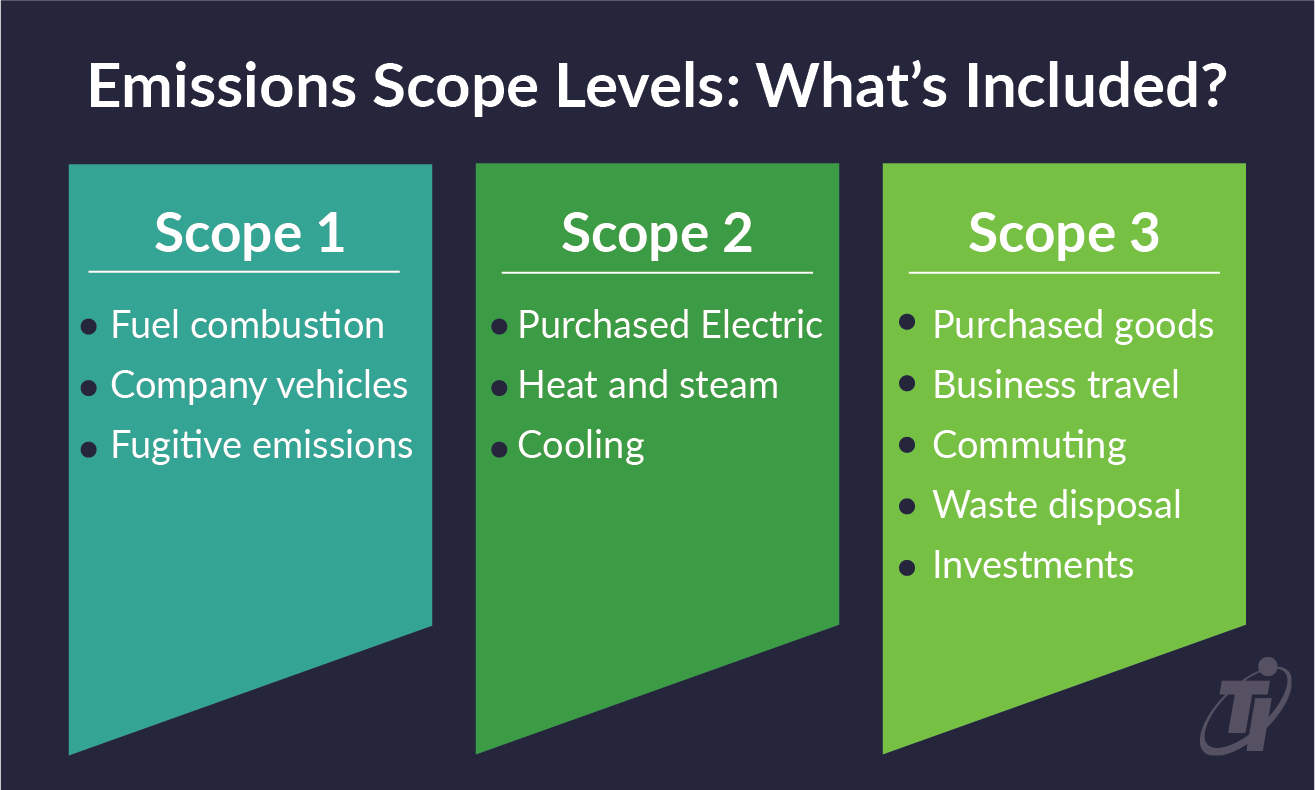Why Your Company Should Measure Emissions
Business leaders and executives have shifted their attention to sustainability in recent years as a business imperative to reduce their environmental impact. One of the most significant ways companies can begin the journey toward reducing their carbon footprint is through monitoring carbon emissions. We’ve outlined the standard for emission measurements as defined by Greenhouse Gas Protocol, and the benefits of monitoring emissions on multiple scope levels.
What are the Three Levels of Emissions Scopes?
- Scope 1: This scope covers direct emissions from sources owned or controlled by your company
- Scope 2: This scope covers indirect emissions from the generation of purchased electricity, steam, heating and cooling consumed by your company
- Scope 3: This scope includes all other indirect emissions that occur in a company’s value chain. This is where travel falls within your emissions reporting.
Below are a few examples of emissions that fall under each scope type:

Why should your Company Measure its Scope 3 emissions?
For many companies, the majority of their emissions and cost reduction potential can be found outside their own operations. By measuring Scope 3 emissions, organizations can identify emission hotspots, resources and energy risks in their supply chain. This also allows companies to assess and engage suppliers in terms of their sustainability performance, and improve the energy efficiency of their products.
Once a company has a clear understanding of their emissions measurements, they can positively engage to reduce emissions from business travel and employee commuting.
How can My Company begin Measuring its Scope 3 emissions?
Travel Incorporated provides Scope 3 Carbon Footprint and Carbon Offset calculations within the TripInsights graphical reporting feature. With this automated calculation, you can easily track the carbon emissions of your company’s business travel, and see the impact of any offset programs you have in place. Using this data, you can adjust your program to include more carbon offset initiatives, or plan more strategic travel for better emissions-awareness.
For more information on TI’s Carbon Footprint and Offset calculations, contact your Travel Incorporated Client Success Manager for support.
Resource: Access the Greenhouse Gas protocol guide for tactics and recommendations to reducing emissions.




Leave a Reply
Want to join the discussion?Feel free to contribute!